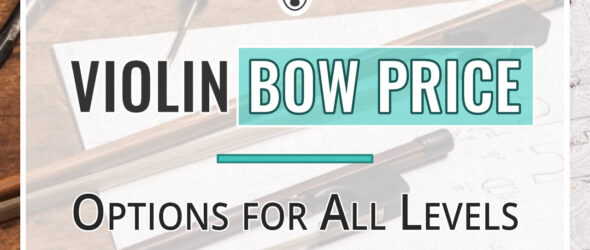After playing for a few months, you might want to look for a new violin bow; but what is a good violin bow price? Today we’ll take a look at the types of violin bows best suited for all levels of violin players along with their price ranges.
Finding a nice violin bow will elevate your sound and help you play well. Different price ranges will get you bows made of various materials, with differing pros and cons.
Let’s find the right bow for you!
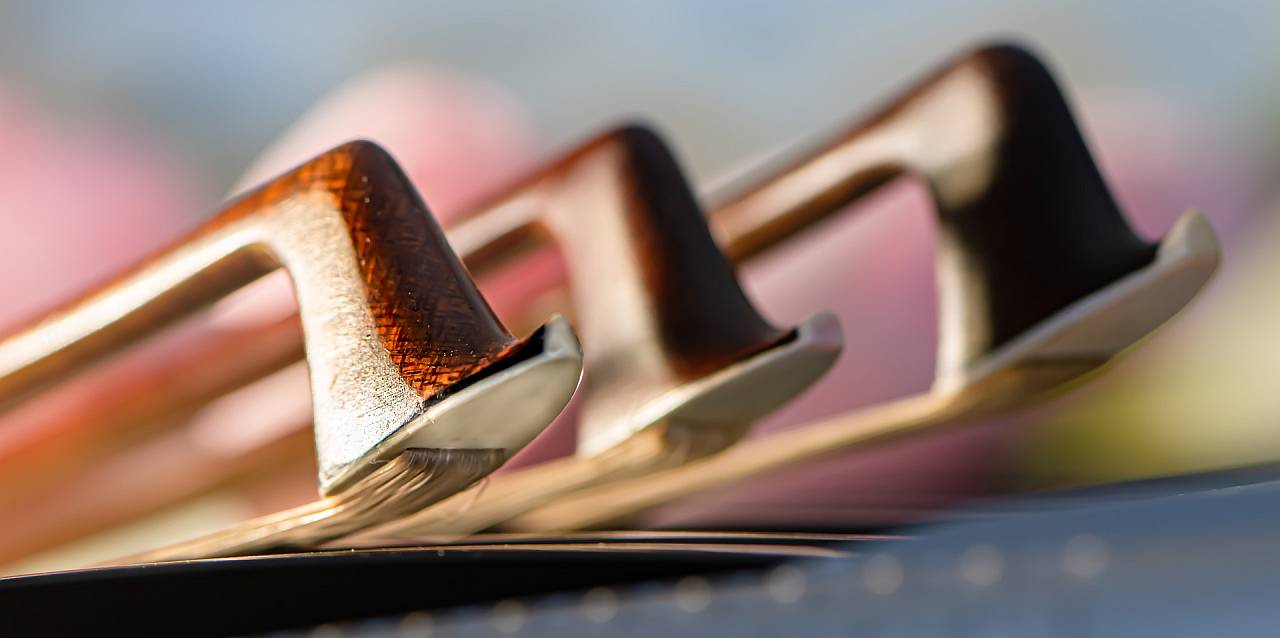
Types of Bows & What Determines Their Price
First, let’s talk about popular types of bows made from various materials. The material of any violin bow along with the prestige of its maker will determine the price. Also, note that in my price ranges, I’m looking at full-size violin bows. Smaller bows are generally cheaper!
1. Wooden Bows
When you imagine a violin bow, you probably assume that it’s made of wood. Today there are many different materials used in bow making, but wood is the most traditional.
The most favored wood bow makers have used through the ages is Pernambuco. The texture of the wood lends itself beautifully to the quality needed for a bow that performs the strokes and techniques we want to play.
This sounds great, right? However, the Pernambuco tree is now on the endangered list, and it’s illegal to cut it down. Despite this, some bow makers still use this wood, making bows unethically. Plus, the scarcity of pernambuco wood has driven up the price of all bows made with this material.
Overall, wooden bows are generally regarded as the highest quality bow, but they can be very expensive. Cheaper wooden bows can be low quality, and there are generally better options available at the same lower price point.
2. Carbon Fiber Bows
Carbon fiber has become increasingly popular in the last decade, as it’s cheaper and the bows are more ethically made. A carbon fiber violin bow is generally a better bang for your buck than buying a wooden bow at the same price. Very cheap carbon fiber bows can be unreliable though.
Carbon fiber bows can withstand the elements better than wooden violin bows can. If you want to play outside often or travel with your instrument, a carbon fiber violin bow can be a better investment than wood, and you won’t have to worry about it quite as much.
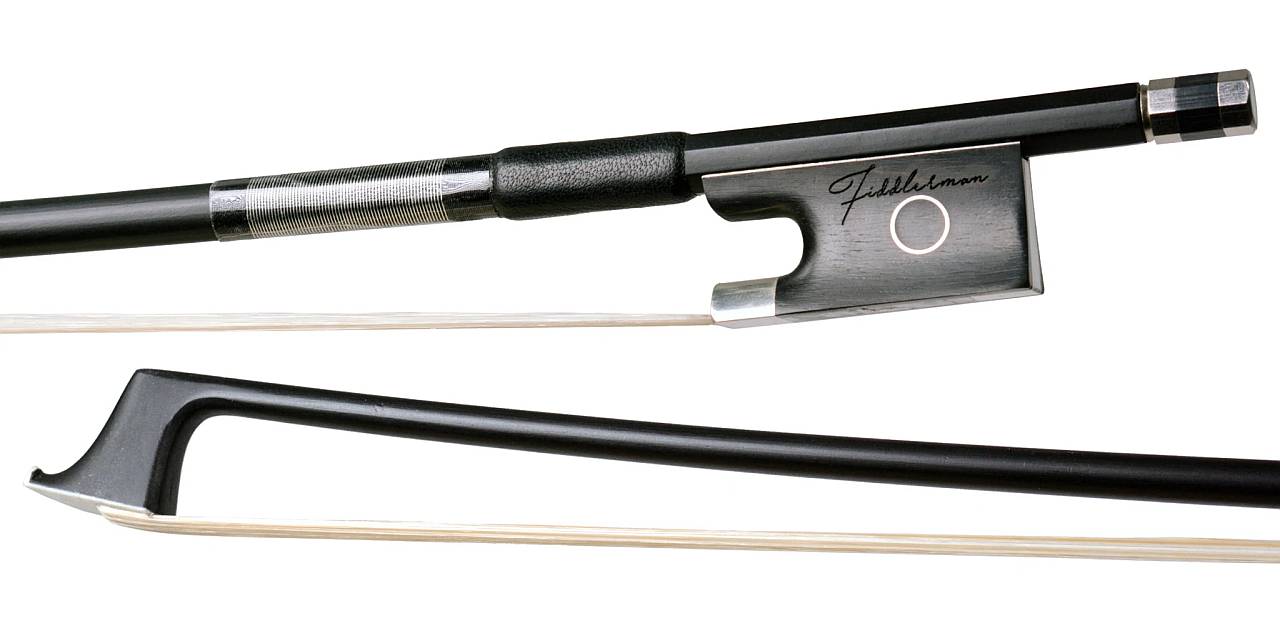
3. Fiberglass Bows
Fiberglass violin bows are the cheapest bows on the market, but they’re also the lowest quality and the least reliable. The synthetic material is cheap and light, and the fiberglass bow stick is usually hollow, which isn’t the case for wooden or carbon fiber bows.
If your violin came with a bow in the case, it’s very likely a cheap fiberglass bow. These bows will do the job as you begin learning the violin, but they don’t hold up well, and it’s usually hard to perform more difficult bow techniques (like spiccato) with this type of bow.
4. Antique Bows
Antique bows are by far the most expensive violin bows, but they’re the favorite among professional musicians for their fine workmanship, the beautiful sound they achieve, and the ease of playing.
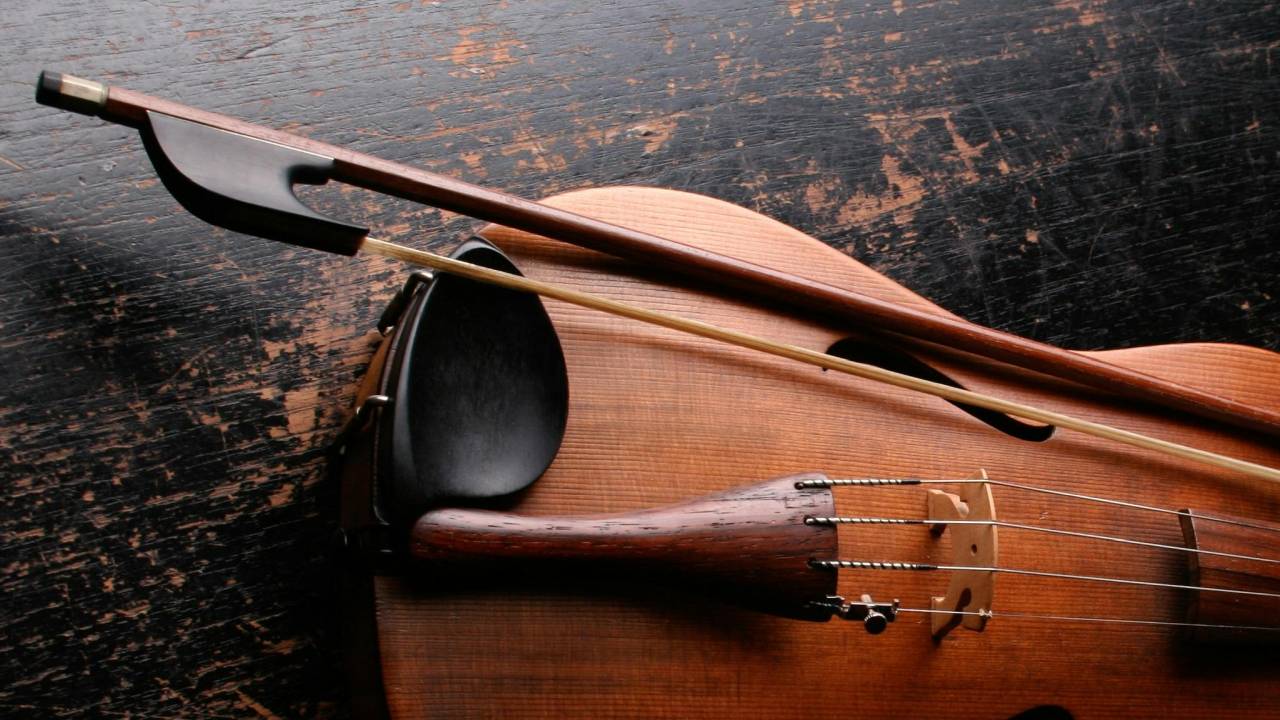
These bows can go for tens of thousands of dollars and are often made of materials that are now limited. You’ll see many an antique bow that boasts an ebony frog with an ivory inlay, which has stopped quite a few musicians at the airport. Some countries limit these materials, and traveling musicians tend to be stopped and questioned as to why they’re transporting them. If you’re traveling often with your instrument, be aware of what materials are in your violin bow, and if you can travel with them.
Violin Bow Price at Beginner Level: $50-$500
For those just starting out, try using the violin bow that came with your violin. These are often made of fiberglass, and while they don’t hold up well, you can start by learning with this bow and upgrading when it no longer suits your needs.
A cheap beginner’s bow might not sound good for long; lower-priced bows are made from cheaper materials that just don’t perform as well. A common problem I’ve noticed with most bows at this level is that the hair eventually doesn’t tighten enough, and the cost of a rehair is more expensive than what the bow is worth.
Once you’re ready to purchase a higher-quality bow, I’d recommend looking at carbon fiber options. You can get a higher-quality carbon fiber bow for the same price as a not-so-great wooden bow. Carbon fiber also holds up well, which makes it a great bow for beginners.
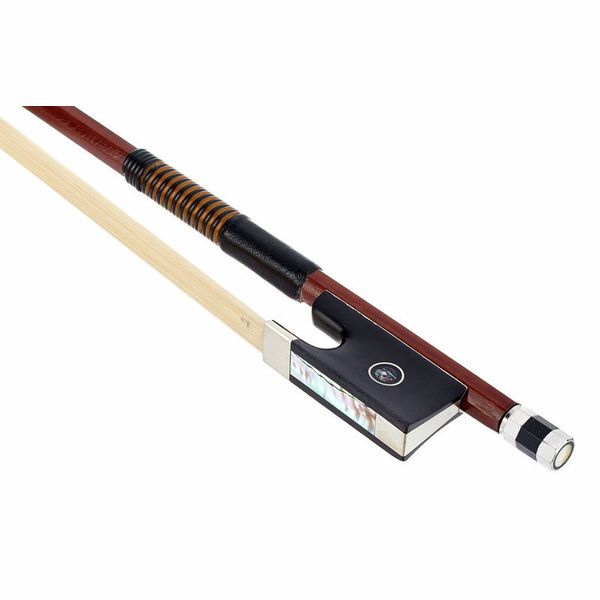
Beginner Bow Price Range
$50-$150 will get you a low-level starting bow, but for a good violin bow that will last through your beginning years, $100-$500 will open up much better options.
Beginner-budget violin bow

Glasser X-Series Violin Bow
Support us for more FREE content No extra costs for you Recommended by Violinists
Bows for Intermediate Violinists: $500-$2,000
An intermediate-level bow will help you perform a tricky technique like spiccato or ricochet much easier.
A carbon fiber bow will still give you the best quality at this level, and you can find some great options in this price range. You can also discover some nice quality wooden bows at this price point, especially if you can purchase them during a sale and buy them at a discount.
Intermediate Bow Price Range
The typical price range for an intermediate-level bow is $500-$2,000. You’ll find nice quality bows that can last a lifetime (if handled properly) at this price.
Intermediate-level violin bow
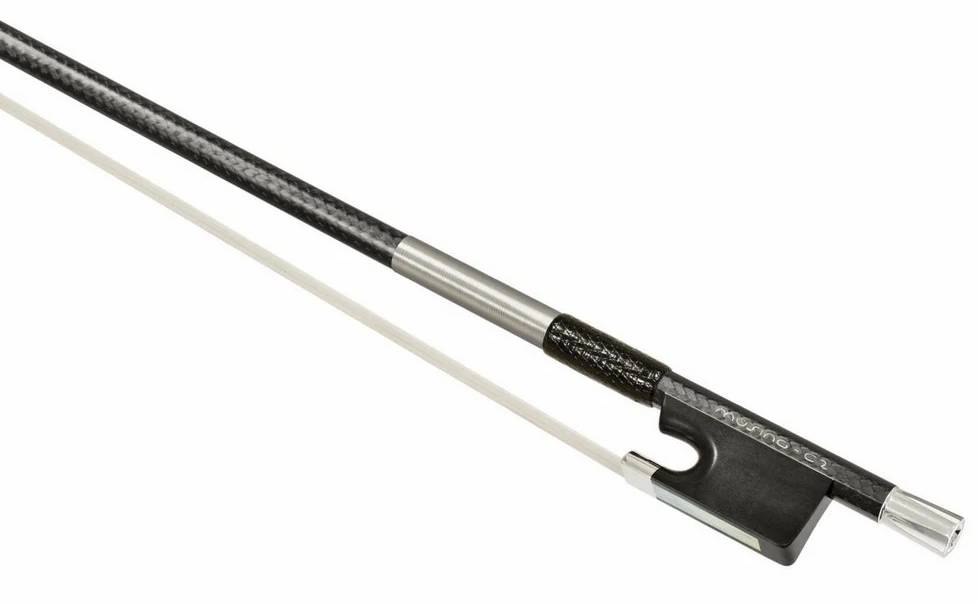
Musing C-3 by Arcus
Support us for more FREE content No extra costs for you Recommended by Violinists
Bow Recommendations for Advanced Players: $2,000+
Advanced and professional players sometimes boast that their bow costs more than their violin itself! High-level bows are generally made of wood, and many famous violinists play on antique bows from French, English, or German makers.
At this price point, you can generally find a good wooden bow with a great sound. Usually, the better the bow, the easier you’ll be able to play and perform the techniques your music calls for; and this can come at a high price tag…
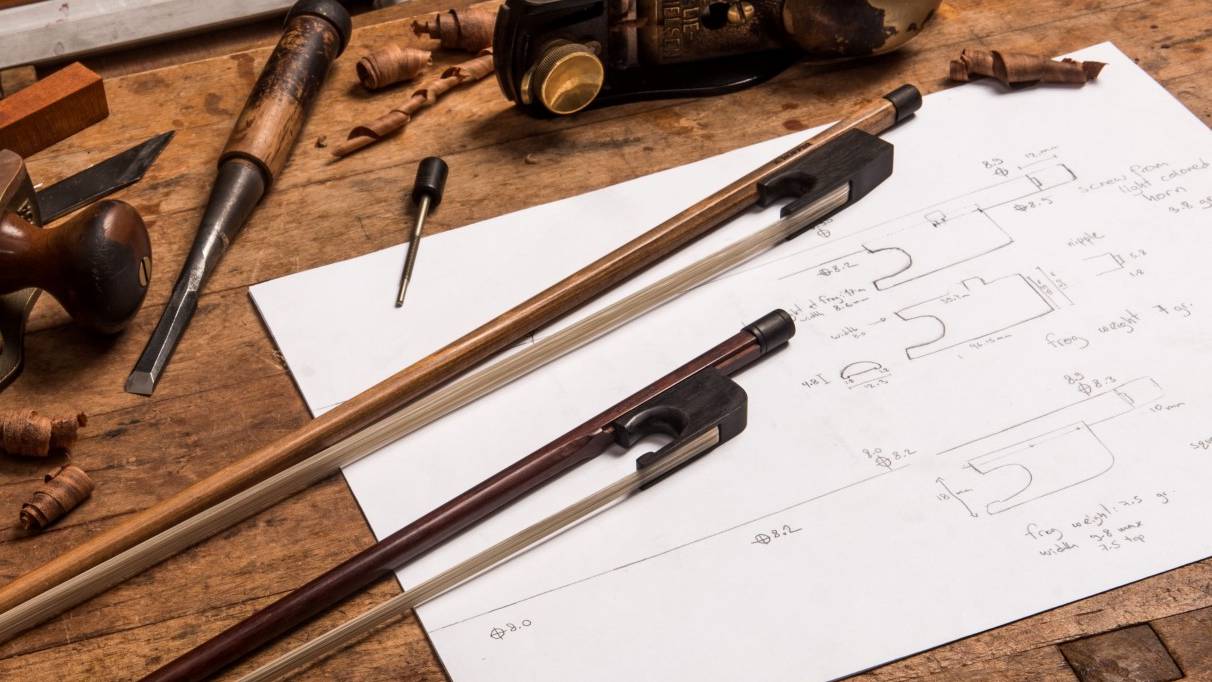
Advanced Bow Price Range
Advanced level bows start at around $2,000, and are great for budding or seasoned professionals. Antique and top-quality bows can go into the tens of thousands of dollars. It’s a lot of money, but for the best players, the sound quality helps hone their craft.
High-end violin bow for advanced players
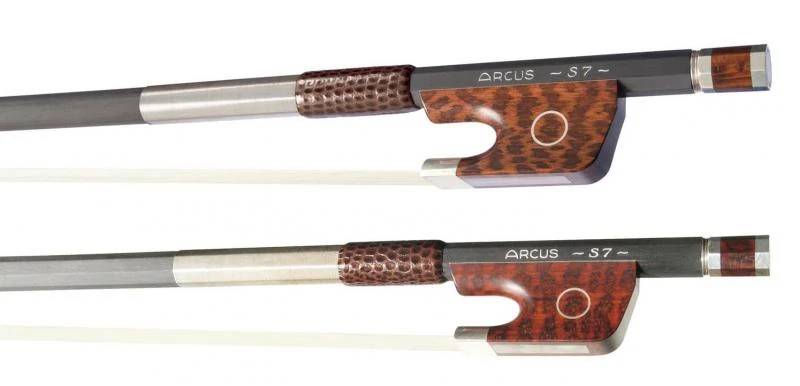
Arcus S7
Support us for more FREE content No extra costs for you Recommended by Violinists
Things to look for
Bow shopping is most suited to in-person shopping, where you can try out many options and hear the sound quality for yourself. There are, however, a few popular online instrument sites that have in-home trial options. You can order a few bows, try them at home, and send back the ones that don’t work for you. These options are available at most price points!
When you’re trying out a bow, test all the different bow techniques you can think of. Can you play legato without the bow bouncing? How easy does spiccato feel? It’s very helpful to have a fellow musician with you to let you know slight differences in the sound.
Learn more…
I hope this guide gave you a thorough understanding of the cost of a violin bow for all levels and price points. A good bow will elevate your sound and feel like a natural extension of your arm. While some of the best bows can cost thousands, it’s still possible to find nice bows at most prices if you know what to look for. Good luck finding your perfect bow!
If you’d like to learn more about instrument recommendations and cost, I think you might like reading the Cost of a Violin.
And, if you’d like to learn about all the bow parts, check out Parts of the Violin Bow: A Complete Overview.
